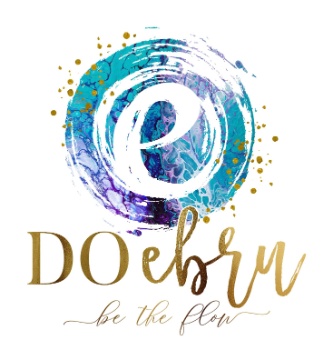I found this info Kusadasi forum and liked it a lot, so sharing with Ebru lovers.
Water. Few things are as miraculous. Graceful, powerful, mysterious – it’s as precious as life itself. Centuries ago, inspired men and women gazed upon this most vital of elements and drew forth an art form like no other.
Their name for this exhilarating dance of color on water is Ebru. Sometimes described as the art of marble etching, Ebru isn’t chiseled or painted. Its beauty is unveiled through water. Every tiny drop of color descends into a sea of possibilities as a masterpiece is born.
Marbling is the art of creating colorful patterns by sprinkling and brushing color pigments on a pan of oily water and then transforming this pattern to paper. The special tools of the trade are brushes of horsehair bound to straight rose twigs, a deep tray made of unknotted pinewood, natural earth pigments, cattle gall and tragacanth. It is believed to be invented in the thirteenth century Turkistan. This decorative art then spread to China, India and Persia and Anatolia. Seljuk and Ottoman calligraphers and artists used marbling to decorate books, imperial decrees, official correspondence and documents. New forms and techniques were perfected in the process and Turkey remained the center of marbling for many centuries. Up until the 1920′s, marblers had workshops in the Beyazit district of
Istanbul, creating for both the local and European market, where it is known as Turkish marble paper.
The Turkish art of Ebru which is known to be practiced in Istanbul for more than five hundred years and known as “Turkish paper” for centuries in the western world certainly has a tradition which is passed from generation to generation by a master and apprentice relationship.
Ebru is an art which cannot be learned by reading or listening as all other Ottoman Arts. It is extremely difficult as regards to its performance and effected by various parameters which are outside the control of a beginner. In order to overcome all these difficulties and guide the novice marbler to understand what he/she is doing so that technically perfect results are achieved, the guidance of a master is needed. It is seen that there is no marbler without a master and the tradition is passed from generation to generation by a master and apprentice relationship if our history of Ebru is examined. Ebru learned without a master has no relation with our tradition.
One of the most important characteristics of our tradition is the use of natural earth pigments which belong to the chemical family of metal-oxides and other natural dyeing material all of which are not chemically soluble in water. The primary reason for using earth pigments is that the marblers lived centuries ago had no choice of making dyes other than nature itself. Later marblers used dyes of the same origin to imitate their predecessors, to continue the tradition in terms of color and appearance, and to make the marbled papers permanent. It will be useful to clarify what is meant by “permanent”. During the production of ready-to-use, off-the-shelf fabricated dyes, various acids, and casein are added, and by experience, it has been found that these acids burn the paper hence the binding or the calligraphy where Ebru is used.


0 Comments